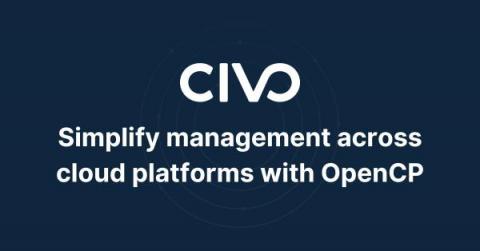Operations | Monitoring | ITSM | DevOps | Cloud
Latest News
The Cloud Monitoring Journey
Monitoring is not a goal, but a path. Depending on the maturity of your project, it can be labeled in one of these six steps of the cloud monitoring journey. You will find best practices for all of them and examine what companies get from each one. From classic virtual machines to large Kubernetes clusters or even serverless architectures, companies have adopted the cloud as a mainstream way to provide their online services.
Using Azure Storage as a Backup Location: A Comprehensive Guide
Data is the lifeline of modern businesses, and losing it can have serious consequences. That’s why backup and recovery strategies are crucial for any organization. Azure Storage is one of the most reliable and secure cloud storage solutions available, making it an excellent option for storing backups. In this article, we will explore the benefits and challenges of using Azure Storage as a backup location and provide you with a step-by-step guide to set up and manage your backups.
4 Azure Load Balancer Metrics to Monitor
An Azure Load Balancer is a Layer-4 (TCP, UDP) load balancer that provides high availability by distributing incoming traffic among healthy VMs. A load balancer health probe monitors a given port on each VM and only distributes traffic to an operational VM. Azure Load Balancers are frequently used in Azure Virtual Desktop (AVD) deployments. From our work with Azure Load Balancer, we think there are 4 key metrics and events you should proactively monitor and alert on.
The Storage Supply Chain and Its Effect on Infrastructure Teams
For the past couple of years, no one has been able to escape the effects of supply chain problems throughout their personal and professional lives. According to our recent State of Hybrid Cloud Storage survey, storage and the IT equipment that supports storage systems were no exception, and disruptions created extra work and headaches for those teams.
Maximizing Uptime and Security: Best Practices for AWS and Azure IAAS
Cloud computing has become an essential tool for businesses looking to increase efficiency, reduce costs, and improve reliability. Among the most popular cloud providers, Amazon Web Services (AWS) and Microsoft Azure are two of the leading players in the industry. Both AWS and Azure offer Infrastructure as a Service (IaaS) solutions that allow businesses to host and manage virtual machines in the cloud.
Simplify management across cloud platforms with OpenCP
Managing your clusters has become a complex and confusing task. With scattered tools and the requirement to learn specific tools from cloud providers, many companies have trouble making the most of the cloud. That's where OpenCP comes in. Join us as we explore the benefits of simplifying management across cloud platforms with OpenCP. We’ll dive into the benefits of using OpenCP, how it works, and how it is built on the best practices of kubectl and kubeapi.
Why Unit Economics Helps You Commit To Discounting Programs
Top 5 Azure Cost Optimization Tools in 2023
The Importance of Automating Workloads in the Cloud
The adoption of cloud computing has seen a constant rise. Research estimates that the cloud has the potential to add USD 1 trillion of Economic Value by 2030. With this increase in cloud adoption, the need to scale faster in a more complex cloud ecosystem seems like the fate of every organization. For IT teams, the challenge is not any different! In a world where our needs can be fulfilled virtually from the comfort of our couches, Gone are the days of long wait times and doing something manually.











